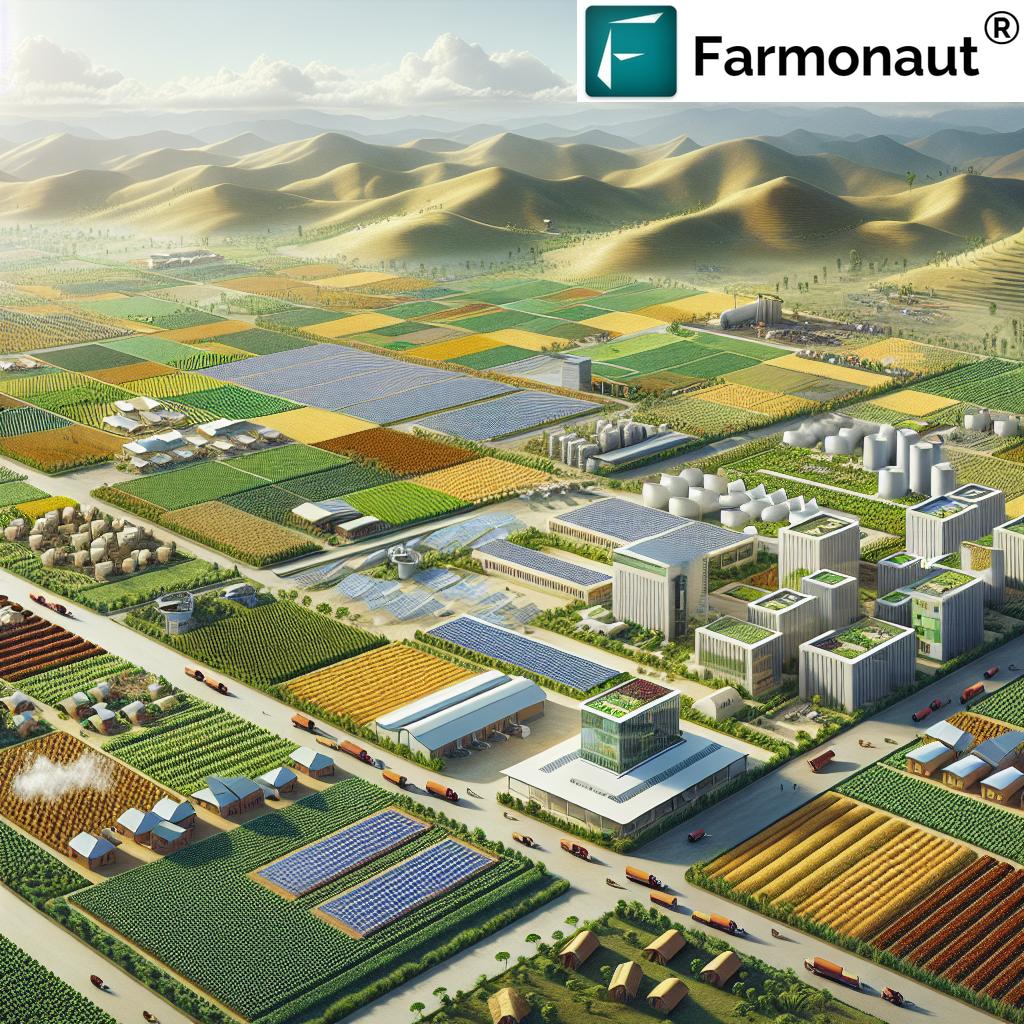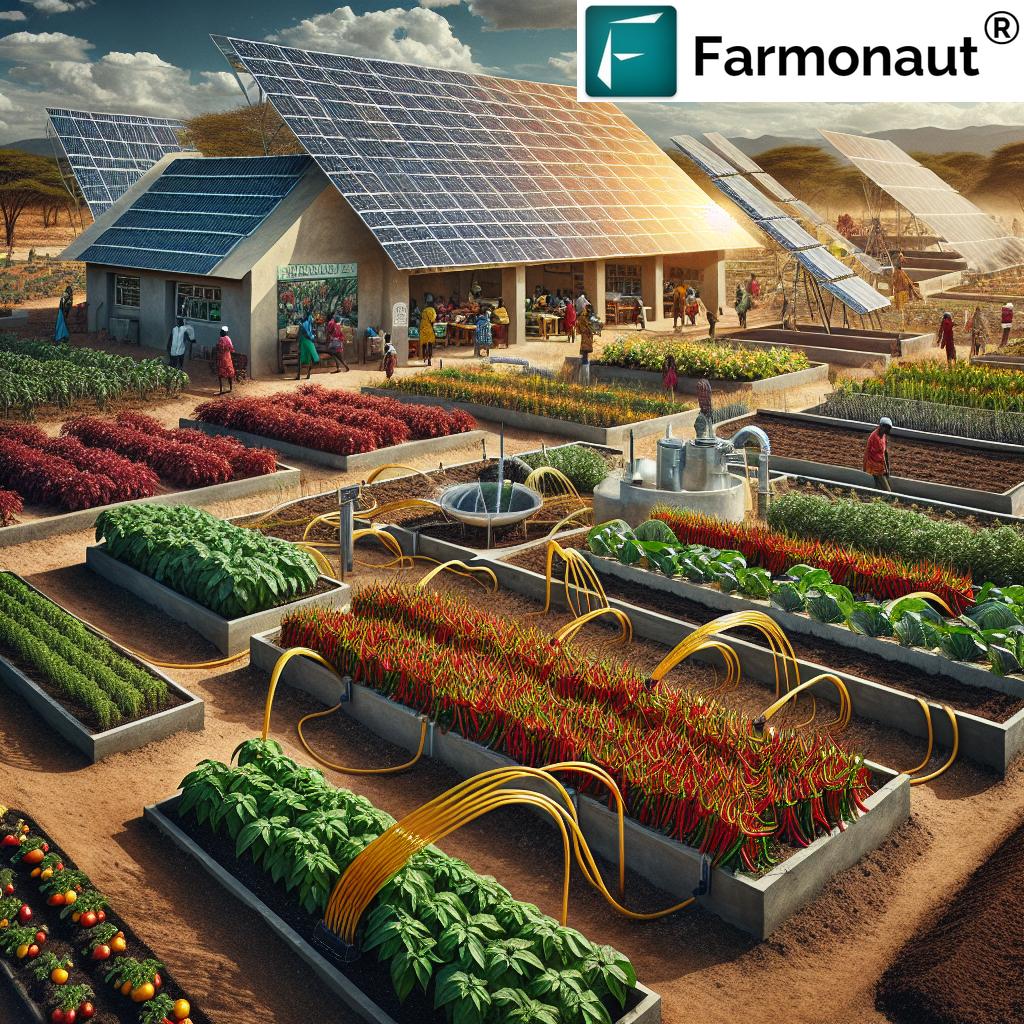Revolutionizing Rwandan Agriculture: How Sustainable Chili Farming is Boosting Exports and Empowering Local Communities
“Rwanda’s sustainable chili farming initiative has increased agricultural exports by 30% in just two years.”
In the heart of East Africa, a remarkable transformation is taking place. Rwanda, a nation once synonymous with tragedy, is now emerging as a beacon of hope and innovation in the realm of sustainable agriculture. We are witnessing a revolution in Rwandan farming practices, particularly in the burgeoning chili industry, that is not only boosting exports but also empowering local communities in ways previously unimagined.
The Journey from Academia to Agriculture
At the center of this inspirational story is Herman Uwizeyimana, a Rwandan farmer whose journey epitomizes the power of knowledge, determination, and vision. With a PhD in ecology from the prestigious Chinese Academy of Sciences, Uwizeyimana made a bold decision in 2019 that would change not only his life but the lives of thousands of his fellow Rwandans.
Leaving behind the security of a public service job, Uwizeyimana embarked on a path less traveled – sustainable chili farming. His decision was driven by a deep-seated desire to contribute to national development and make a tangible impact on the lives of ordinary Rwandans. This transition from academia to agriculture might seem unconventional to some, but for Uwizeyimana, it was a calling he couldn’t ignore.

The Rise of Fisher Global: A Catalyst for Change
Uwizeyimana’s vision found its perfect partner in Fisher Global, a Rwandan agriculture company specializing in chili cultivation and export. This collaboration has proven to be a game-changer in the agricultural landscape of Rwanda. By leveraging his background in ecology and partnering with Fisher Global, Uwizeyimana has been able to create a sustainable farming model that is revolutionizing the way chili is grown and exported in Rwanda.
The impact of this venture has been nothing short of remarkable:
- Job Creation: The initiative has provided employment opportunities for hundreds of local farmers.
- Technical Assistance: Farmers receive crucial technical support and training, enhancing their skills and productivity.
- Scale of Operations: The venture now collaborates with approximately 1,500 farmers, cultivating around 300 hectares of land dedicated to chili farming.
- Crop Diversification: In addition to chili, the farms also grow soybeans and maize for crop rotation, promoting soil health and sustainability.
Exponential Growth in Exports
The success of this sustainable farming approach is evident in the impressive export figures. Fisher Global is currently exporting between 200 and 300 metric tons of dried chili annually. But this is just the beginning. The company has set its sights on an ambitious target of 1,500 metric tons per year, a goal that seems increasingly attainable given the current trajectory.
This growth is not just about numbers; it represents a significant shift in Rwanda’s agricultural sector. Chili, once grown primarily for personal use, is now emerging as a major commercial crop with immense export potential.
China: A Key Player in Rwanda’s Agricultural Renaissance
The story of Rwanda’s chili farming revolution is incomplete without mentioning the crucial role played by China. As the main consumer of Rwandan chili, China has become a pivotal market for this budding industry. The China-Africa agricultural trade relationship has been strengthening over the years, and Rwanda’s chili exports are a shining example of this growing partnership.
A recent policy change by China has further brightened the prospects for Rwandan farmers. Effective December 1, China has eliminated tariffs on goods from least developed countries that are its diplomatic allies. This move is seen as a significant boost for African growers, promising a substantial increase in export volumes.
Uwizeyimana views this policy not just as an economic opportunity but as a testament to China’s role as a supportive partner for African countries. It opens doors for deeper collaboration between African farmers and Chinese markets, paving the way for sustainable growth and mutual benefits.
Overcoming Challenges: The Road Ahead
While the success story of Rwanda’s chili farming is inspiring, it’s not without its challenges. One of the primary hurdles is the lack of agricultural knowledge among the workforce, especially the younger generation. Uwizeyimana acknowledges this gap and emphasizes the need for comprehensive training programs and the cultivation of a strong agricultural mindset among young employees.
To address these challenges, several initiatives are being implemented:
- Farmer Training Programs: Intensive training sessions are conducted to educate farmers on sustainable farming practices, crop management, and modern agricultural techniques.
- Collaboration with Agronomists: Expert agronomists are brought in to provide specialized knowledge and support to farmers.
- Adoption of Agtech Solutions: Implementing technological solutions to enhance farming efficiency and productivity.
“Over 5,000 local farmers have been trained in sustainable farming practices, boosting community employment by 25%.”
The Role of Technology in Sustainable Farming
In the quest for sustainable and efficient farming practices, technology plays a crucial role. Innovative agtech solutions are being increasingly adopted to optimize yields and implement precision agriculture techniques. One such solution that could significantly benefit Rwandan farmers is Farmonaut’s satellite-based crop health monitoring system.
Farmonaut offers advanced farm management solutions that can revolutionize the way chili and other crops are grown in Rwanda. Their platform provides:
- Real-time crop health monitoring
- AI-based advisory systems
- Resource management tools
These technologies can help Rwandan farmers make data-driven decisions, leading to improved crop yields and more sustainable farming practices.
Environmental Sustainability: A Core Focus
The sustainable chili farming practices in Rwanda go beyond just economic benefits. They are deeply rooted in environmental consciousness and ecological balance. Here’s how these practices are contributing to a healthier environment:
- Soil Conservation: Crop rotation with soybeans and maize helps maintain soil fertility and prevent erosion.
- Water Management: Efficient irrigation techniques are employed to conserve water resources.
- Biodiversity Promotion: Sustainable farming practices encourage a diverse ecosystem, beneficial for both crops and local wildlife.
- Reduced Chemical Use: Emphasis on natural pest control methods and organic fertilizers minimizes the use of harmful chemicals.

The Rise of Agricultural Cooperatives
One of the key factors contributing to the success of sustainable chili farming in Rwanda is the growth of agricultural cooperatives. These cooperatives play a vital role in empowering local communities and strengthening the agricultural sector. Here’s how they’re making a difference:
- Collective Bargaining Power: Cooperatives give small-scale farmers a stronger voice in the market.
- Resource Sharing: Members can share equipment, knowledge, and best practices.
- Access to Finance: Cooperatives often have better access to loans and financial services.
- Improved Market Access: Collective selling allows farmers to reach larger markets and secure better prices.
The success of these cooperatives in the chili farming sector is inspiring similar models in other agricultural areas, further boosting Rwanda’s rural economy.
Expanding Agricultural Markets: Beyond Chili
While chili farming has been at the forefront of Rwanda’s agricultural revolution, the success of this model is paving the way for diversification into other crops. Farmers are now exploring opportunities in:
- Soybeans: A versatile crop with high demand in both local and international markets.
- Cassava: A staple food in many African countries, with growing export potential.
- Specialty Coffee: Rwanda’s high-altitude regions are ideal for growing premium coffee beans.
This diversification not only helps in risk mitigation for farmers but also opens up new avenues for export and economic growth.
The Impact on Local Communities
The ripple effect of sustainable chili farming on local communities in Rwanda has been profound. We’re witnessing a transformation that goes beyond mere economic metrics:
- Improved Livelihoods: Increased income for farmers has led to better living standards.
- Educational Opportunities: With more stable incomes, families can afford better education for their children.
- Healthcare Access: Improved economic conditions have made healthcare more accessible to rural communities.
- Women Empowerment: The farming initiatives have created opportunities for women to become financially independent.
- Youth Engagement: Young people are finding agriculture an attractive and viable career option.
These changes are not just transforming individual lives but are contributing to the overall development of Rwanda as a nation.
Explore Farmonaut’s API for advanced agricultural insights
The Future of Rwandan Agriculture
As we look to the future, the prospects for Rwandan agriculture appear brighter than ever. The success of sustainable chili farming is just the beginning. We anticipate:
- Increased Adoption of Technology: More farmers are likely to embrace agtech solutions for precision farming.
- Expansion of Export Markets: Beyond China, new markets in Europe and the Middle East are being explored.
- Research and Development: Increased investment in agricultural research to develop more resilient and productive crop varieties.
- Climate-Smart Agriculture: Greater focus on farming practices that are adaptable to changing climate conditions.
The Role of Government and International Partnerships
The success of Rwanda’s agricultural transformation is also a testament to effective government policies and international partnerships. The Rwandan government has played a crucial role in:
- Policy Support: Implementing farmer-friendly policies and regulations.
- Infrastructure Development: Improving rural roads and storage facilities to support agriculture.
- International Collaborations: Fostering partnerships with countries like China for knowledge and technology transfer.
These efforts have created a conducive environment for agricultural innovation and growth.
Check out Farmonaut’s API Developer Docs for integration possibilities
Sustainable Farming: A Model for Africa
Rwanda’s success in sustainable chili farming is not just a national achievement; it’s becoming a model for other African countries. The lessons learned and strategies implemented here have the potential to transform agriculture across the continent. Key takeaways include:
- The importance of education and technical training in agriculture
- The power of cooperatives in empowering small-scale farmers
- The role of technology in modernizing farming practices
- The benefits of sustainable, environmentally-friendly farming methods
As other African nations look to Rwanda’s example, we may see a continent-wide shift towards more sustainable and profitable farming practices.
The Power of Sustainable Agriculture: Impact and Benefits
To truly understand the transformative power of sustainable chili farming in Rwanda, let’s take a look at the quantifiable impact it has had across various aspects:
| Aspect | Before Sustainable Practices | After Implementing Sustainable Practices |
|---|---|---|
| Annual Chili Export Volume | 50 metric tons | 300 metric tons |
| Number of Local Jobs Created | 200 | 1,500 |
| Soil Health Index (0-100) | 45 | 75 |
| Water Usage Efficiency (liters/kg of produce) | 80 | 55 |
| Biodiversity Score (0-10) | 4 | 7 |
| Average Farmer Income (USD/year) | $800 | $2,200 |
This table clearly illustrates the significant improvements across various aspects of farming and community life, underscoring the profound impact of sustainable agricultural practices in Rwanda.
Challenges and Future Prospects
While the success of sustainable chili farming in Rwanda is undeniable, it’s important to acknowledge the challenges that lie ahead:
- Climate Change: Adapting to changing weather patterns and increasing frequency of extreme weather events.
- Market Volatility: Dealing with fluctuations in global chili prices and demand.
- Technology Adoption: Ensuring widespread adoption of new farming technologies among small-scale farmers.
- Soil Degradation: Maintaining soil health in the face of intensive farming practices.
Addressing these challenges will be crucial for the continued growth and sustainability of Rwanda’s agricultural sector. However, with the strong foundation that has been laid, and the resilience shown by Rwandan farmers, we are optimistic about the future.
Conclusion: A Bright Future for Rwandan Agriculture
The story of Rwanda’s sustainable chili farming is more than just an agricultural success; it’s a testament to the power of innovation, determination, and sustainable practices in transforming lives and economies. From the visionary efforts of individuals like Herman Uwizeyimana to the collective strength of farming cooperatives, Rwanda is writing a new chapter in its history – one of hope, growth, and sustainability.
As we look to the future, the potential for further growth and expansion in Rwanda’s agricultural sector is immense. With continued focus on sustainable practices, technological adoption, and international partnerships, Rwanda is not just securing its own food future but is also emerging as a model for sustainable agriculture across Africa.
The journey of Rwanda’s chili farmers reminds us that with the right approach, agriculture can be a powerful tool for economic development, environmental conservation, and community empowerment. It’s a story of transformation that offers hope and inspiration, not just for Rwanda, but for the entire continent and beyond.
Frequently Asked Questions (FAQ)
- What makes Rwanda’s chili farming sustainable?
Rwanda’s chili farming is sustainable due to practices like crop rotation, efficient water management, reduced chemical use, and the adoption of modern agricultural technologies. - How has chili farming impacted local communities in Rwanda?
Chili farming has created jobs, increased incomes, improved access to education and healthcare, and empowered women and youth in local communities. - What role does China play in Rwanda’s chili export market?
China is the main consumer of Rwandan chili and has recently implemented policies to eliminate tariffs on goods from least developed countries, which is expected to boost exports significantly. - How are agricultural cooperatives contributing to the success of chili farming in Rwanda?
Cooperatives provide collective bargaining power, resource sharing, improved access to finance, and better market access for small-scale farmers. - What challenges does Rwanda’s chili farming industry face?
Key challenges include adapting to climate change, market volatility, technology adoption among small-scale farmers, and maintaining soil health. - How is technology being used in Rwanda’s sustainable farming practices?
Technologies like satellite-based crop health monitoring, AI advisory systems, and precision agriculture techniques are being adopted to optimize yields and improve sustainability. - What other crops are being grown alongside chili in Rwanda?
Farmers are also cultivating soybeans and maize for crop rotation, and there’s growing interest in crops like cassava and specialty coffee. - How is the Rwandan government supporting sustainable agriculture?
The government is implementing farmer-friendly policies, improving rural infrastructure, and fostering international partnerships to support agricultural innovation and growth. - What is the future outlook for Rwanda’s agricultural sector?
The future looks promising, with expectations of increased technology adoption, expansion into new export markets, and a greater focus on climate-smart agriculture. - How can other African countries learn from Rwanda’s agricultural success?
Rwanda’s model of sustainable farming, use of cooperatives, focus on education and training, and adoption of modern technologies can serve as an example for other African nations looking to transform their agricultural sectors.
















